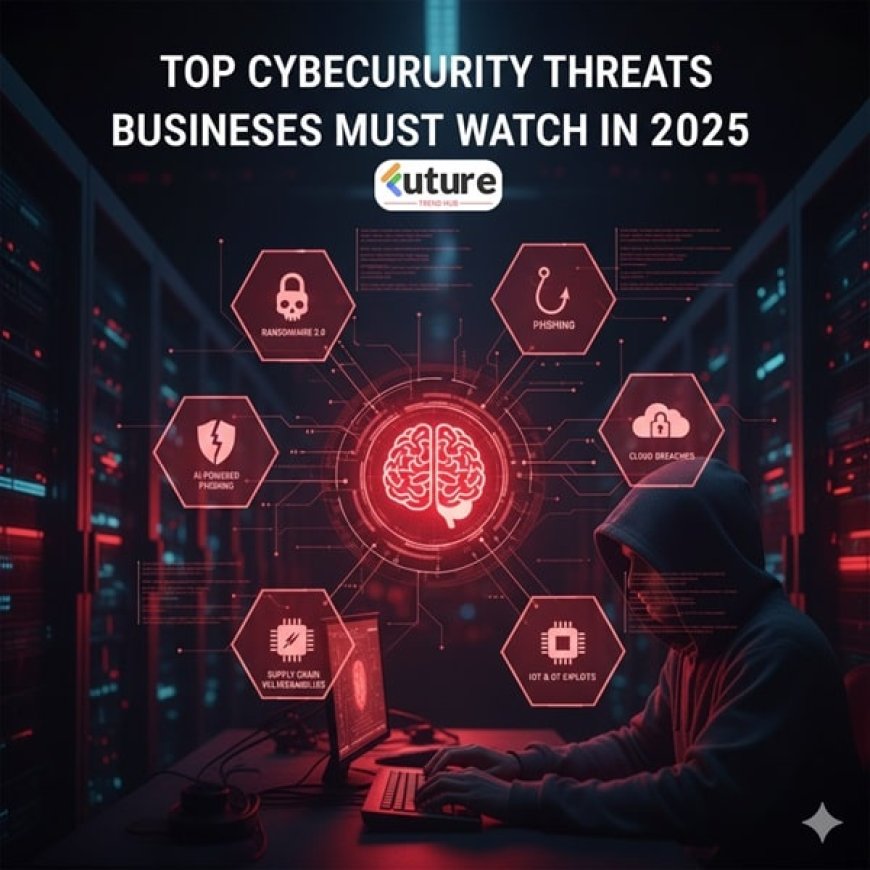Top Cybersecurity Threats Businesses Must Watch in 2025
As digital transformation accelerates, businesses face an increasingly complex cybersecurity landscape in 2025. From AI-powered attacks to supply chain vulnerabilities, understanding and mitigating these threats is crucial for organizational resilience. Here's an overview of the top cybersecurity threats businesses must prioritize this year.

1. AI-Driven Cyberattacks
Artificial Intelligence (AI) is revolutionizing cybersecurity, but it's also being weaponized by cybercriminals. AI enables attackers to automate phishing campaigns, craft sophisticated deepfakes, and exploit vulnerabilities in AI systems themselves. A recent Gartner report revealed that 62% of organizations encountered deepfake attacks, with audio-based deepfakes being more prevalent than video.
2. Ransomware-as-a-Service (RaaS)
Ransomware continues to be a significant threat, with cybercriminals offering RaaS platforms that lower the barrier to entry for attacks. These services enable affiliates to execute attacks using pre-built tools, leading to a surge in ransomware incidents targeting businesses worldwide.
3. Supply Chain Vulnerabilities
Cyberattacks targeting third-party vendors remain a persistent risk. Threat actors exploit weaknesses in the supply chain to infiltrate larger organizations, leading to data breaches and operational disruptions. Implementing robust vendor risk management practices is essential to mitigate this threat.
4. Deepfake and Voice Biometric Spoofing
Deepfake technology is increasingly used in cyber extortion and misinformation campaigns. Attackers employ realistic fake audio and video to impersonate executives or manipulate systems. A survey indicated that 32% of organizations experienced voice biometric spoofing using deepfake audio.
5. Exploitation of Zero-Day Vulnerabilities
Zero-day vulnerabilities in edge devices like VPNs and firewalls are prime targets for cybercriminals. The rapid exploitation of these vulnerabilities underscores the need for timely patching and proactive security measures to safeguard network perimeters.
6. DDoS and Ransom-Driven DDoS (RDoS) Attacks
Distributed Denial-of-Service (DDoS) attacks are becoming more frequent and powerful, often driven by ransom demands. Botnets, fueled by unsecured Internet of Things (IoT) devices, are leveraged to launch these attacks, disrupting services and causing reputational damage.
7. Insider Threats and Social Engineering
Insider threats, whether malicious or accidental, pose significant risks. Cybercriminals exploit publicly available personal information to craft targeted social engineering attacks, deceiving employees into disclosing sensitive data or credentials.
8. Quantum Computing Risks
While still in its early stages, quantum computing threatens to break current encryption methods. Organizations are advised to begin transitioning to post-quantum cryptography standards to future-proof their data security.
9. Geopolitical Cyber Tensions
Nation-state actors increasingly engage in cyber activities targeting critical infrastructure and financial sectors. These sophisticated attacks aim to achieve geopolitical objectives, making them formidable threats to business continuity
10. AI-Powered Cyber Defense
On a positive note, AI is also enhancing cybersecurity defenses. Organizations are adopting AI-driven threat detection and response systems to identify and mitigate attacks more effectively. A significant percentage of cybersecurity professionals believe AI can substantially reduce the volume of successful cyberattacks
Conclusion
The cybersecurity landscape in 2025 is marked by advanced threats that require proactive and adaptive strategies. Businesses must invest in AI-powered defenses, strengthen supply chain security, and stay ahead of emerging technologies like quantum computing. By prioritizing these areas, organizations can enhance their resilience against the evolving cyber threat landscape.







